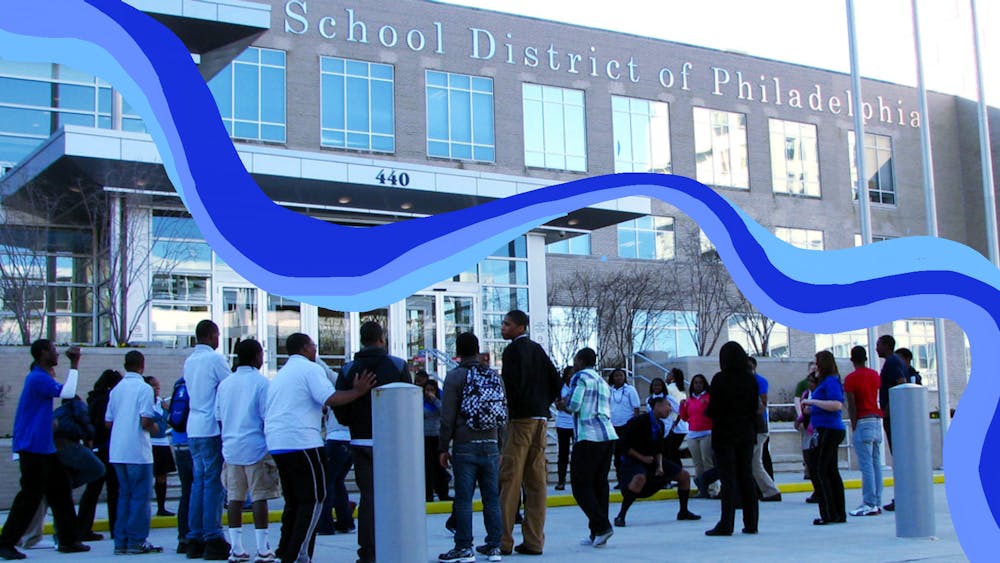The University of Pennsylvania is one of hundreds of colleges educating students who attended high school during the COVID–19 pandemic. These students were taking courses foundational to college instruction when their high schools pivoted to remote instruction for a period of time to protect students and staff. But online learning was inaccessible for many high school students and was not always as thorough as in–person instruction. Students could not always receive key services from schools. Even when schools returned to in–person teaching, the transition was disjointed, with higher rates of teacher and student absenteeism. This led to what many are calling “learning loss,” an issue especially felt by those who had less funding, resources, and support from their schools during remote learning. Learning loss is evident in recent declining ACT scores and anecdotal remarks from educators and students sharing the barriers and difficulties of online instruction.
Pandemic learning loss is not felt equally by all students. Appropriate technology and high speed internet were not available for many low income students, making it even more difficult to engage in online classes. Students attending remote school were also more likely to succeed if they had a parent at home who could take time off of work to provide support. Some wealthy families were able to hire tutors to supplement or replace remote instruction. Nationally, private schools were more likely to return to in–person instruction during the pandemic, and teachers felt more supported at these private institutions. The pandemic laid bare systemic inequalities in education, showing how students from families who cannot afford certain technology or private instruction are disadvantaged.
K–12 schools were also unable to meet the basic health needs of students during remote learning that were previously provided. Services such as free meal programs, counseling services, and special education services are crucial for both student wellbeing and academic performance, but schools could not always deliver them. These services are crucial for the success of children who do not receive that support outside of school. Child protection referrals also dropped, with a report finding that referrals decreased between 27 and 40 percent. The research suggests that many students experiencing abuse or neglect were going unnoticed. Mental health also faltered for students during the pandemic, with the CDC reporting that rates of emergency department visits for suspected suicide attempts amongst teens jumping by 31 percent in 2020. Students experiencing food insecurity, mental health challenges, and abuse were not receiving the support they needed from their schools, making it even more difficult for students to learn during the pandemic.
The lack of resources and academic support means that many students are entering Penn without foundational skills that should have been developed in high school. This is especially evident in math and science classes. “There's an abundance of data that folks who did math classes online did not make the same kind of math skill gains [as students who took classes in person],” says Bruce Lenthall, Executive Director of the Center for Teaching and Learning, a Penn program that supports instructors in improving teaching practices. Students who took high school science classes online also did not get to complete labs in person. Lenthall explained that last year even some learning assistants leading labs at Penn took the labs online and did not experience the lab hands-on. Professors also came to Lenthall reporting that some students’ writing skills were not where they were in previous years, and that students were having difficulty evaluating readings. Lenthall emphasizes that students are coming into Penn with varying levels of learning loss, but that this is not a suggestion that Penn students affected by the pandemic are less capable than previous Penn students.
Beyond missing out on content covered in high school due to the pandemic, many students are coming into Penn without the proper soft skills to thrive in academic settings. Learning online over Zoom or with prerecorded videos meant that high school students had different expectations in terms of attendance and actively participating in classes. Students may also have underdeveloped time management and studying skills due to open book tests and the proliferation of cheating.
Students are keenly aware of the pandemic affecting learning. Most Penn first years were just midway through their high school sophomore year during the onset of the pandemic. For Hannah Moskowitz (W '26), pandemic learning loss became clear when an introductory political science professor handed back their first papers. Hannah says that her professor told the class that it took her an unusually long time to grade the papers because they were worse than what the professor usually saw. According to Hannah, her professor had two theories for the poor quality: disengagement and pandemic learning loss. “I've seen my peers' writing, including my own, I would think that it would be better. It's not anyone's fault,” Hannah says.
Hannah believes that disengagement is also a symptom of online instruction. “So much of our learning experience was boiled down [during remote learning] that our attention span and our ability to put the phone away and listen to what we are supposed to learn is gone,” she says. Like many students, Hannah's high school pivoted to remote learning in the spring of 2020. At her New York City public charter school, Success Academy High School for Liberal Arts, classes were taught over Blue Jeans and Zoom. For the first several months of the pandemic, clubs and electives were canceled and classes were combined into 100 person meetings. Hannah characterizes remote learning as lonely and frustrating, and feels that the relationships with teachers were lost. This was exacerbated when her school, like many across the country, experienced issues with teacher retention.
Jessa Lingel, a core faculty member in the Gender, Sexuality and Women’s Studies program and an associate professor of Communication, is acutely aware of how COVID–19 changed students’ current behavior. She says that more students ask her for deadlines on assignments, and she says that anecdotally, professors are seeing more cases of plagiarism.
Like many professors, Lingel adjusted classroom practices after the pandemic. Lingel decided to stop penalizing students for absences. Students also approached her about recording classes, which she did during the pandemic. During in-person classes, she chooses not to record because her classes cover sensitive content and students may disclose personal stories. Lingel says this was a complex decision because there is no standard at Penn, and professors are left to make these choices.
“One thing that's a challenge is for faculty who have been teaching for around a decade, like me, we know what normal in the classroom looks like. But for [new] students who are coming to college, and it's always been post COVID, their understanding of normal suddenly starts to look a little bit different. So I think a lot of us are grappling with, are we ever going to get back to pre–covid? Or is this just normal now?” she says.
Lingel cites some takeaways from the pandemic in relation to education. “In some ways, I think COVID has been good for creating conversations and more awareness around anxiety, depression, mental health, [and] disabilities, but it's also a struggle to figure out what to do in a way that's fair for everyone, especially with the bigger classes,” she says.
However, there are some professors who teach introductory courses that build the foundation for majors who are reluctant to change lesson plans. “There are cases where faculty say, ‘My course is the first in a sequence. And if I slow down and teach this, what happens when I hand the students off to the next course, because I don't want to disadvantage them?’” explains Lenthall.
Lenthall says that one major takeaway that the Center for Teaching and Learning imparts onto professors is that they need to measure where their students are and what they are struggling with throughout the course. He says this was emphasized pre–pandemic, but that it takes on a new resonance in teaching students who attended high school during the pandemic. Professors can do this through conversations, surveys, quizzes, or more frequent, lower–stakes assignments.
While some professors may change the way they teach courses, the University of Pennsylvania offers multiple resources for students who are struggling academically. The Weingarten Center offers learning consultations and tutoring services. Of the over 1,000 tutoring requests in various content areas the Weingarten Center receives, over 80 percent are honored. This year, the Weingarten Center launched an online component to its preexisting Calc Start Up program. This online portion offers modules on Canvas designed by math tutors before the start of the Fall 2022 semester, an important intervention for incoming students who may be unprepared for introductory math classes. Page views of these modules totaled 8,000–12,000 views per week during the summer of 2022. Additionally, the Marks Family Writing Center offers one–on–one appointments to provide feedback on writing. All of these services help students who attended high school during the pandemic adjust to rigorous, in-person classrooms.
Due to COVID–19, many students missed out on the substance of core high school courses. The issue of accommodating students’ pandemic learning losses continues to be felt at and beyond Penn, revealing inequalities in the education system that particularly impact low-income students. Meeting incoming students' needs on the heels of the pandemic means recognizing these realities and the unique challenges that years of remote and disjointed learning left on the high school-to-college transition.







